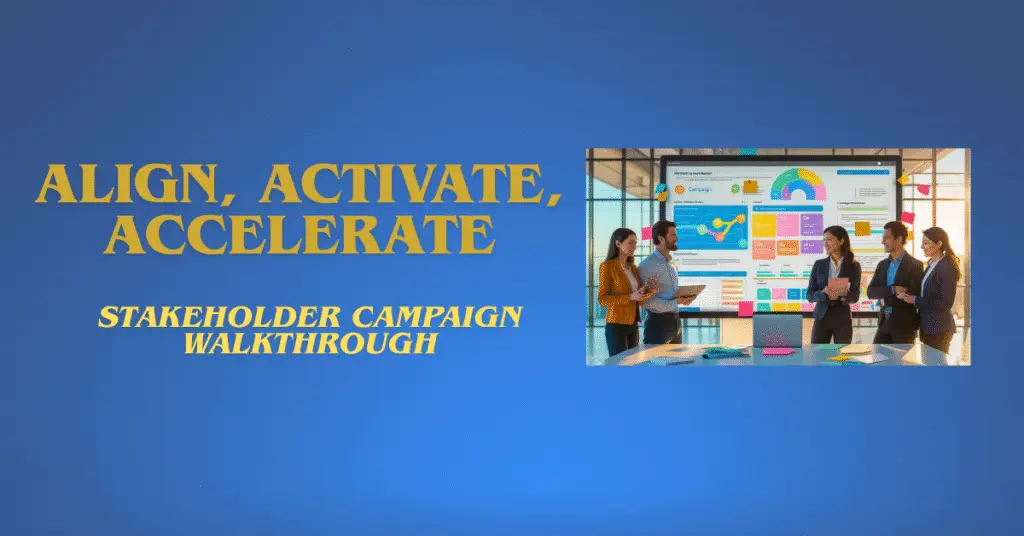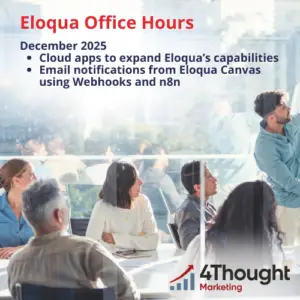
Marketing automation platforms like Eloqua and Marketo have revolutionized how teams orchestrate complex customer journeys, but the real magic emerges when you translate those intricate configurations into a clear, shared narrative. A stakeholder campaign walkthrough shifts the focus from clicking through platform menus to illustrating how each component of your marketing automation workflow contributes to overarching business objectives.
By weaving together a compelling campaign strategy visualization, you transform technical steps into strategic milestones—ensuring everyone from content creators to sales leaders understands not just what happens, but why it matters. Ultimately, this process is about forging genuine cross‑team alignment, turning a series of automated triggers into a cohesive story that drives results.
Why a Walkthrough? Because Alignment Beats Configuration
It’s tempting to equate sophisticated automation logic with campaign success, yet even the most advanced marketing automation workflow can fall flat without shared context. A stakeholder campaign walkthrough invites participants to step out of the weeds of “if this, then that” and focus on the customer journey in human terms. When you frame each trigger or decision node within your campaign strategy visualization as part of a broader narrative—“We want to nurture high-value leads through personalized content before handing off to sales”—you create a unifying purpose that transcends departmental silos. This emphasis on story over settings accelerates buy‑in, reduces misinterpretation, and lays the groundwork for true cross‑team alignment.
- What are we trying to achieve?
- Who are we targeting?
- How do we personalize the journey?
- Where do we hand off leads, and what happens next?
When everyone sees the same program flow and understands the intent behind each step, true cross‑team alignment follows—and your campaigns move faster from plan to pipeline.
What the Stakeholder Walkthrough Covers
Rather than clicking through individual steps, this session unfolds as a structured tour of your automation blueprint. Use these pillars to anchor your discussion:
- Entry Points as Strategic Triggers: Describe how prospects enter the workflow—whether via a gated whitepaper form, a behavioral signal like webinar attendance, or an imported list segment. Position it as the moment your marketing automation workflow sparks a conversation.
- Touchpoints as Engagement Milestones: Each email, SMS, or webhook represents a purposeful interaction in your campaign strategy visualization. Explain why the initial awareness email precedes a personalized case study follow‑up and how these layers of messaging build momentum.
- Wait Steps as Respectful Pauses: Instead of simply “waiting three days,” articulate how each pause honors the prospect’s need to digest content, increasing receptivity to your next touch.
- Decision Steps as Personalization Logic: Walk through how specific behaviors—“opened the product launch email” or “clicked the pricing page”—branch the journey toward deeper educational content or a renewed outreach angle.
- Handoff as Collaborative Handoff: Demonstrate how qualified leads seamlessly transition from marketing nurture to sales outreach, complete with context on past engagements. This stage is where cross‑team alignment crystallizes into coordinated action.
Best Practices for Leading a Walkthrough
To maximize impact, structure your stakeholder campaign walkthrough around clarity and engagement rather than technical deep‑dives. Start with a high‑level diagram of your campaign strategy visualization—a simplified flow that highlights each stage without platform jargon. Narrate the story using plain language focused on customer intent: “We begin by identifying new sign‑ups, then we build trust through educational emails, and finally we invite prospects to a demo based on their engagement.” Pause deliberately after each major phase to solicit feedback, ensuring participants can voice questions or concerns in real time. Throughout, circle back to your core metrics—conversion rates, time‑to‑value, pipeline contribution—to tie every element of your marketing automation workflow back to tangible goals.
Who Should Be in the Room?
A truly effective stakeholder campaign walkthrough includes more than just the builders of your automation. Invite representatives from every team that influences or relies on the campaign’s outcome: marketing operations professionals who design the logic; content and messaging specialists who craft the emails and landing pages; sales or SDR managers who will act on hand‑raiser leads; analytics or data leads who measure performance; and compliance or privacy officers when regulatory considerations apply. You may also benefit from an external consultant or platform expert who can validate your approach and share best practices gleaned from other implementations. By assembling a cross‑functional group, you reinforce the spirit of cross‑team alignment and foster collective ownership of campaign success.
The Payoff: Faster, Smarter, Better Campaigns
When your organization adopts regular stakeholder campaign walkthroughs, the ripple effects are profound. Miscommunications become rare as everyone works from the same campaign strategy visualization; approval cycles shorten because plain‑language narratives replace technical documentation; and performance improves through sharper segmentation and more relevant messaging. Over time, this collaborative cadence transforms optimization into a habit—each walkthrough surfaces insights that refine your marketing automation workflow, driving continuous uplift in engagement and conversion metrics.
Final Thoughts
Whether you’re on Eloqua, Marketo, or another automation platform, victory hinges not on the sheer number of workflow steps but on the clarity and cohesion with which you present them. A thoughtfully executed stakeholder campaign walkthrough elevates your technical setup into a strategic storyline—aligning teams around shared objectives, validating assumptions before launch, and empowering everyone to execute with confidence.
By centering the customer journey in your campaign strategy visualization and fostering genuine cross‑team alignment, you set the stage for campaigns that are not only well‑built, but truly impactful.





